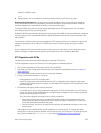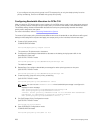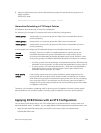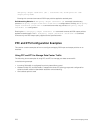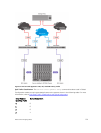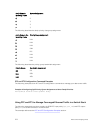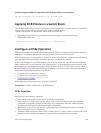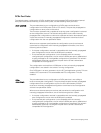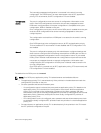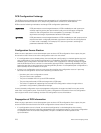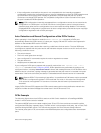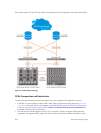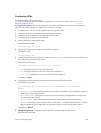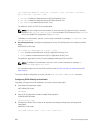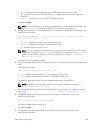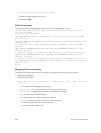
The internally propagated configuration is not stored in the switch’s running
configuration. On a DCBX port in an auto-downstream role, all PFC, application
priority, ETS recommend, and ETS configuration TLVs are enabled.
Configuration
source
The port is configured to serve as a source of configuration information on the
switch. Peer DCB configurations received on the port are propagated to other
DCBx auto-configured ports. If the peer configuration is compatible with a port
configuration, DCBx is enabled on the port.
On a configuration-source port, the link with a DCBx peer is enabled when the port
receives a DCB configuration that can be internally propagated to other auto-
configured ports.
The configuration received from a DCBX peer is not stored in the switch’s running
configuration.
On a DCBX port that is the configuration source, all PFC and application priority
TLVs are enabled. ETS recommend TLVs are disabled and ETS configuration TLVs
are enabled.
Manual The port is configured to operate only with administrator-configured settings and
does not auto-configure with DCB settings received from a DCBx peer or from an
internally propagated configuration from the configuration source. If you enable
DCBx, ports in Manual mode advertise their configurations to peer devices but do
not accept or propagate internal or external configurations. Unlike other user-
configured ports, the configuration of DCBx ports in Manual mode is saved in the
running configuration.
On a DCBx port in a manual role, all PFC, application priority, ETS recommend, and
ETS configuration TLVs are enabled.
The default for the DCBx port role is manual.
NOTE: On a DCBx port, application priority TLV advertisements are handled as follows:
• The application priority TLV is transmitted only if the priorities in the advertisement match the
configured PFC priorities on the port.
• On auto-upstream and auto-downstream ports:
– If a configuration source is elected, the ports send an application priority TLV based on the
application priority TLV received on the configuration-source port. When an application
priority TLV is received on the configuration-source port, the auto-upstream and auto-
downstream ports use the internally propagated PFC priorities to match against the received
application priority. Otherwise, these ports use their locally configured PFC priorities in
application priority TLVs.
– If no configuration source is configured, auto-upstream and auto-downstream ports check
to see that the locally configured PFC priorities match the priorities in a received application
priority TLV.
• On manual ports, an application priority TLV is advertised only if the priorities in the TLV match
the PFC priorities configured on the port.
Data Center Bridging (DCB)
275



